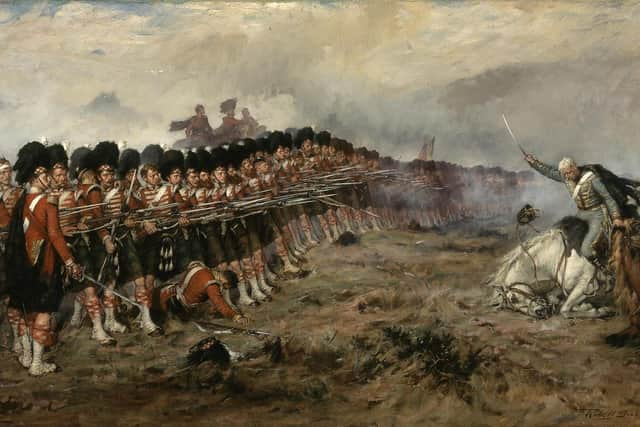Edinburgh Castle Redcoat Cafe and a row that obscures Scotland's long history of the scarlet tunic
In Scotland in 2024, the use of “redcoats” comes with its own set of challenges, after Historic Environment Scotland was forced into reviewing the name of its Redcoat Cafe at Edinburgh Castle following an outpouring of online outrage over the issue.
In Scotland, ‘redcoats’ are usually linked to the Jacobite risings of the 18th century when the British Army made up of English and Scots soldiers – and a batallion of Irish – wore the scarlet tunics. The Argyll Militia, the Royal Scots and Royal Scots Fusiliers were among the regiments on the battlefield, all dressed in red.
Advertisement
Hide AdAdvertisement
Hide AdInterestingly, a red coat was also worn by the Irish Piquets who fought for the Jacobites, who also wore a white cockade to distinguish their side from the enemy.


Historian Dr Robbie MacNiven, posting on social media platform X, said Scottish soldiers were “redcoats” since at least the 1660s when Scotland adopted the uniform following the Stuart restoration of 1660.
Some soldiers, such as royal guards, wore red from the 16th century with Mackays Regiment using the colour in the 1630s, Dr MacNiven added.
Dr MacNiven said: "The regiments of the Scottish Army therefore fought in red right up until the Act of Union in 1707. Following the Act of Union, the Scottish and English armies were essentially amalgamated, but kept their own regiments. In fact, the 1st Regiment – designated the oldest in the British Army – was the Royal Scots.”
The term ‘redcoats’ becomes loaded with sensitivities when looking at events after Culloden when the British Army advanced across the Highlands to first rid it of Jacobite supporters and then destroy its culture at large. The Duke of Cumberland, as early as February 1746, was talking of “speedy punishments”, while General Humphrey Bland, an Irishman, wanted “ridd of all chiefs of clans” and their “barbarous language”.
Highlanders faced killings, rapes and burning of homes and crops in the immediate aftermath of the battle.
At work were figures such as Captain Caroline Frederick Scott, an Edinburgh soldier who relished his own notoriety. As Scott toured around the Hebrides looking for the defeated Jacobite leader, he landed on various islands and ordered his men to plunder livestock and carry out the most atrocious offences. Scott’s men reportedly raped a blind woman on Rona before targeting two girls on Raasay.
Meanwhile, Captain John Fergusson, of Aberdeenshire, became notorious for his abuse of prisoners.
Advertisement
Hide AdAdvertisement
Hide AdThe term “redcoat” also has a negative connotation in the United States since it was worn by British soldiers fighting against US independence in the American Revolution.
However, across the former British Empire, armies have retained redcoats as part of their formal dress uniforms.
According to historian Professor Tom Devine, many thousands of Highland and Lowland Scots were recruited into the British Army from the Seven Years War (1753-63) and fought in their red tunics throughout the empire until the uniforms changed in the later part of the 19th century.
“Numerous paintings from the time depict both officers and men of the famous Highland regiments wearing the familiar red tunics together with kilts from the waist,” he said.
Comments
Want to join the conversation? Please or to comment on this article.
